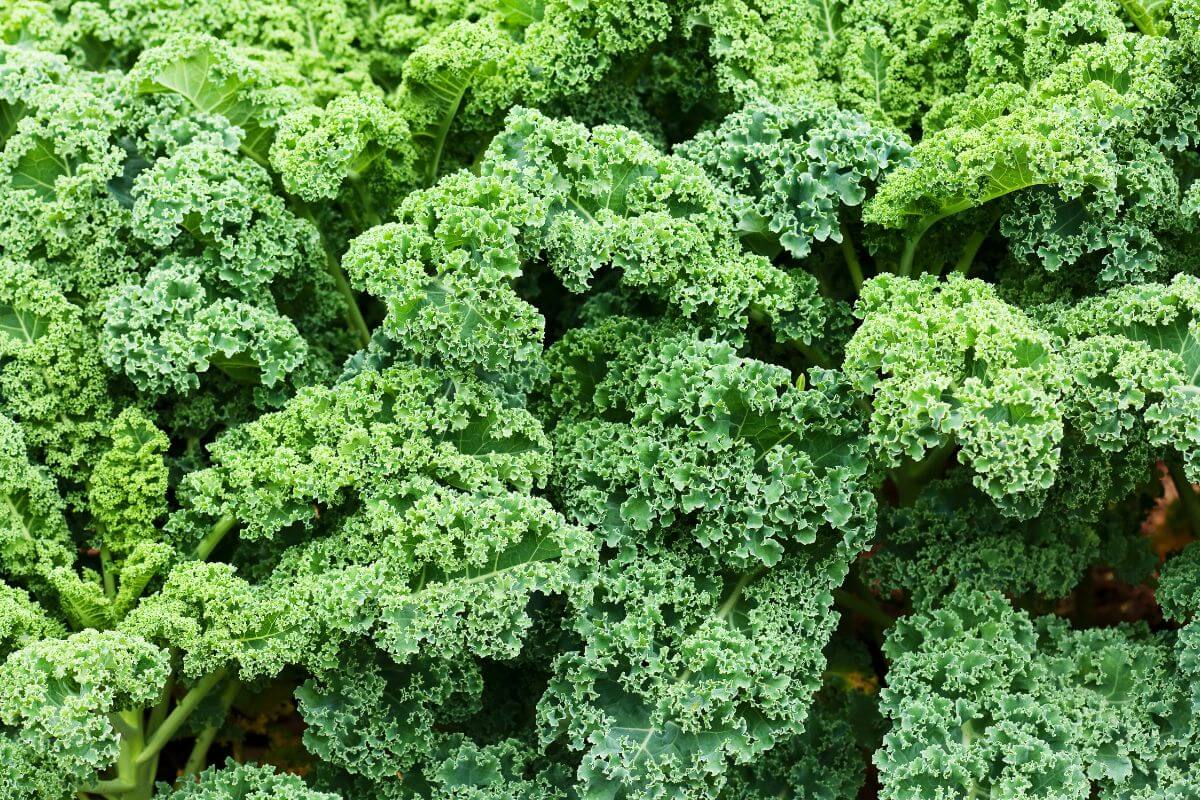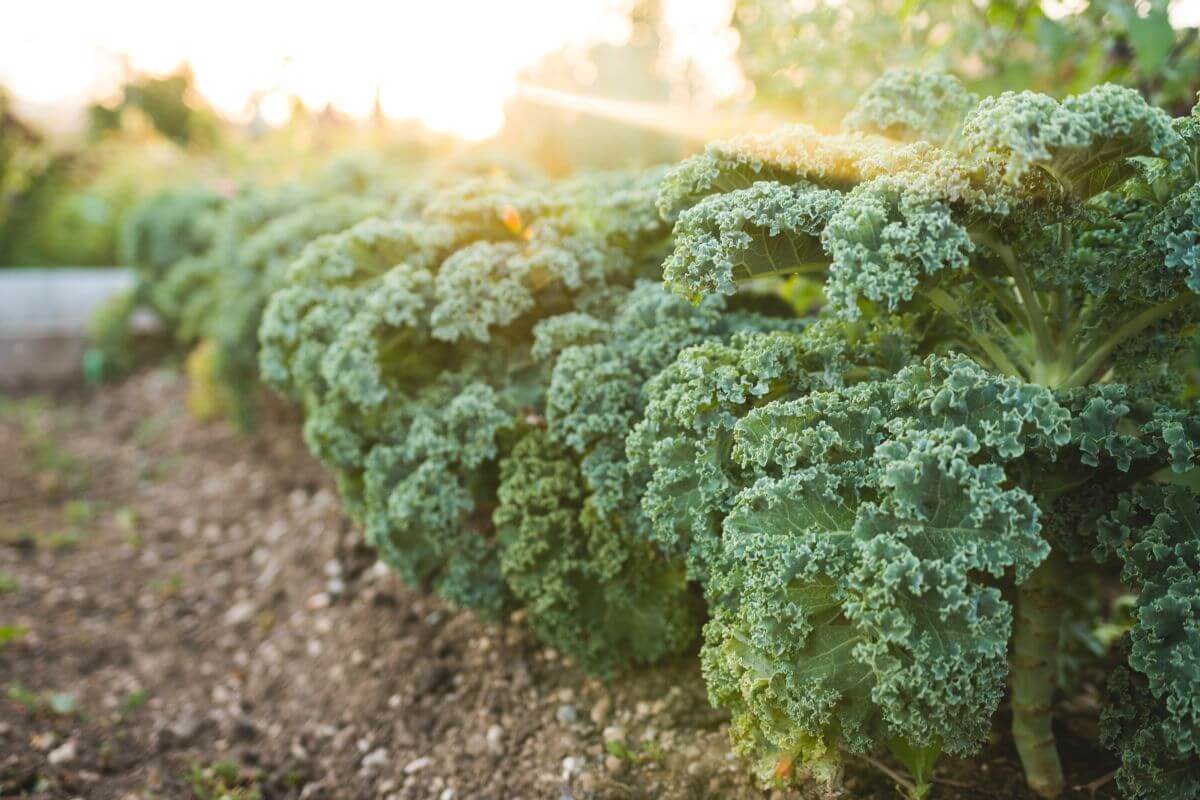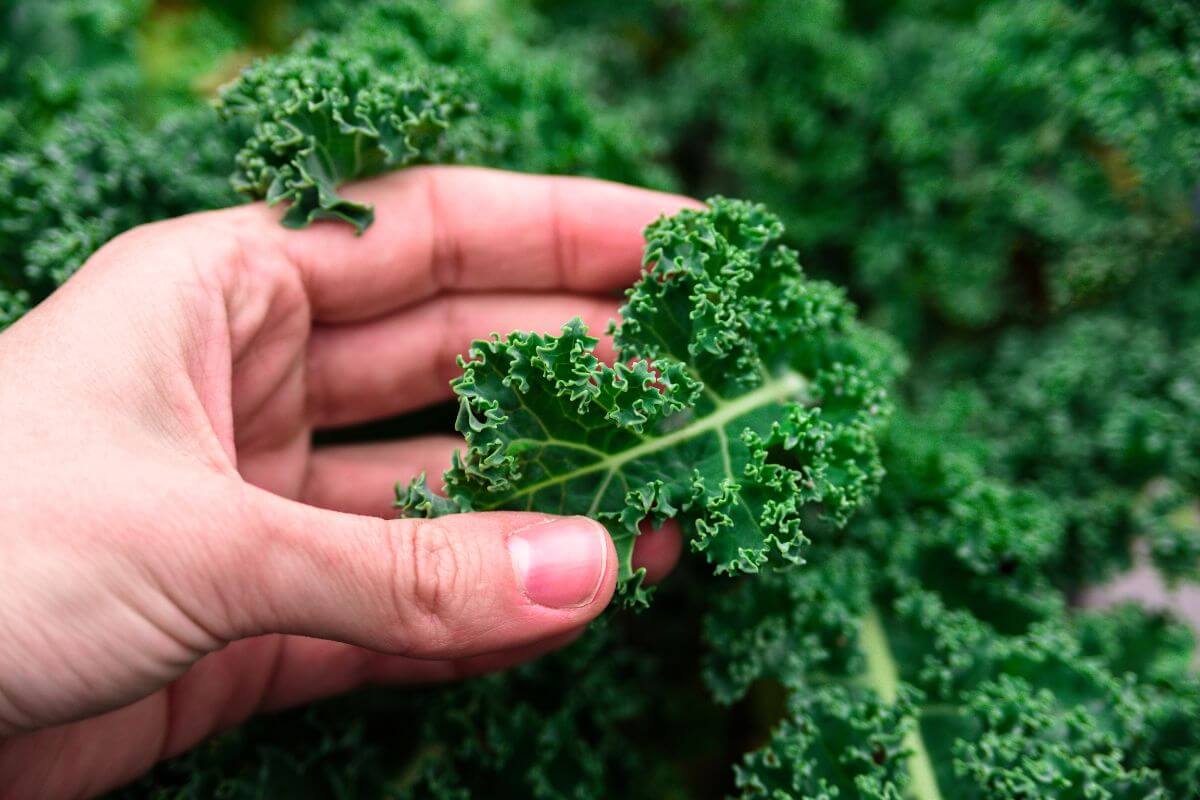Are you a healthy eater that loves Kale in your diet? Well, Kale may not be exactly as you imagined it.
Kale is considered to be man-made, not because it was created in a laboratory, but because mankind had a hand in developing it into its present form.
Today, kale is one of the most popular man-made vegetables in the world. Read on to find out more about kale’s origins and how it was man-made.
History of Kale

Kale originates from the Brassica Oleracea, known as Wild Cabbage or Wild Mustard. It’s the ancestor of a variety of cultivars that are present today in our daily diet.
Among these, we find broccoli, Brussels sprouts, cauliflower, cabbage, collard greens, Savoy cabbage, Kohlrabi, and “Kale.”
Leafy Kale is considered to have had its beginnings in the eastern part of the Mediterranean region and Asia Minor. These beginnings are thought to go as far back as 2000 B.C.
Even earlier, cabbage existed in ancient Greece and was known in Roman society as Sabellian Kale. This plant is considered a direct ancestor of today’s Kale variety.
The first records where cabbage is cited in Europe go all the way back to the 13th century. In the following century, records from England witnessed the distinction between hard head cabbage and leafy kale. So clearly, historically, kale was not literally a “man-made” vegetable.
Russian Kale made its way to Canada in the 19th century. And as to its arrival in the United States, David Fairchild, a botanist for the United States Department of Agriculture, is credited with bringing it to the US from Croatia.
You may be wondering if Kale has such a rich history through the centuries, how can it possibly be man-made?
Is Kale Man-Made?

Modern kale is the result of many decades, if not centuries, of selective breeding and natural cross-breeding mutations. Present-day kale became what it is through the selective breeding of a wild cabbage mutation.
Even as a distant relative of Brassica Oleracea or Wild Cabbage, kale is more commonly called leaf cabbage because of its purple and green foliage, The leaves are edible and often used in salads or stir fry.
Besides being an edible plant, kale is also cultivated as an ornamental plant in outdoor gardens.
When compared to man-made cauliflower, or man-made broccoli, kale is the cultivar that bears the greatest resemblance to its ancestral parent plant, wild cabbage.
What Is Selective Breeding?
Better known as a process for the breeding of animals, the selective breeding methodology is used on plants to increase their desirable characteristics.
Selective breeding of kale has been used by farmers for centuries to increase the size and taste of agricultural produce, as well as to enable plants to yield more at harvest time.
It is used to develop plants with greater resistance to disease and insect infestations. The breeding technique also helps plants increase their tolerance to drought or to other harsh climatic conditions. These genetic traits are highly useful as environmental conditions become harsher.
Selective breeding uses cuttings, layering, or grafting methods for propagation and growth. The most defining aspect of selective breeding is how long it takes to produce the desired results: from decades to centuries or longer.
Farmers throughout history have used selective breeding to breed plants with similarities, but varying traits to create a new plant or a better, stronger version of an existing plant.
Is Kale Genetically Modified?

If you mean genetically modified in a laboratory, yes and no. Thanks to genetic engineering, all kinds of agricultural produce can now resist infections, insects, and even herbicides.
Nowadays, if you only want to eat natural food found in the wild, you’re going to have a very limited diet.
Thousands of years ago, human ancestors hunted and collected plants and berries that grew in nature. With the introduction of agriculture, selective breeding followed.
Organic Kale is a product of selective breeding, whether it has been further genetically modified in a laboratory will depend on the individual kale producer.
Negative Human Intervention of Kale
Unfortunately, human intervention in the breeding and production of agricultural produce is not limited to simply breeding stronger or tastier plants.
We now intervene to protect crops and harvests due to the economic investment involved. Every year, the United States Department of Agriculture (USDA) releases a list of contaminated or dirty produce. Guess what? Kale is on the list.
The USDA, together with the Food and Drug Administration (FDA), regularly tests agricultural produce for pesticide residue on vegetables and fruits.
Kale has shown up on this list as containing only a few or even many pesticide residues on samples tested. Some of these pesticides may be considered non-toxic for human consumption, but others are known to be linked to health problems, from cancer to respiratory problems to fertility difficulties after exposure.
Kale is thought to be more contaminated than other vegetables because it is cultivated closer to the ground where there are larger insect populations. Leafy plants are particularly at risk for infestations, thus kale’s presence on the “dirty” list.
Kale Man-Made Final Thoughts
Is Kale man-made? Modern-day Kale is most certainly the product of considerable human intervention and selective breeding techniques. Without human intervention, kale, as we know it and love it, would most probably not exist.
Read more about other man-made vegetables and fruits:
Kale Man-Made FAQs
Is kale a man-made plant?
Yes, kale is a man-made plant as it has gone through centuries of selective breeding by farmers to get the modern kale we have today. It’s ancestor is the wild cabbage and is a distant relative of other man-made plants like broccoli and cabbage.
Is kale a real vegetable?
Yes, kale is a real vegetable and not genetically modified. Kale is a member of the cabbage family, along with broccoli, cauliflower, Brussels sprouts, and collards. Kale is a leafy vegetable that grows well in cool weather. It is often used in soups, salads, and stir fries.
Why is kale bad for you?
Kale can be bad for you if consumed in large amounts. Like other cruciferous vegetables, kale contains higher amounts of goitrogens, which can lead issues with thyroid function. People can even develop an allergy to kale and other cruciferous vegetables, which can cause bloating and other digestive issues.

